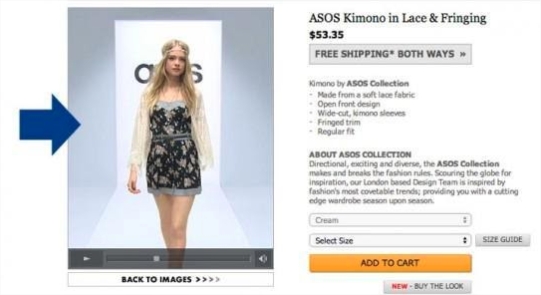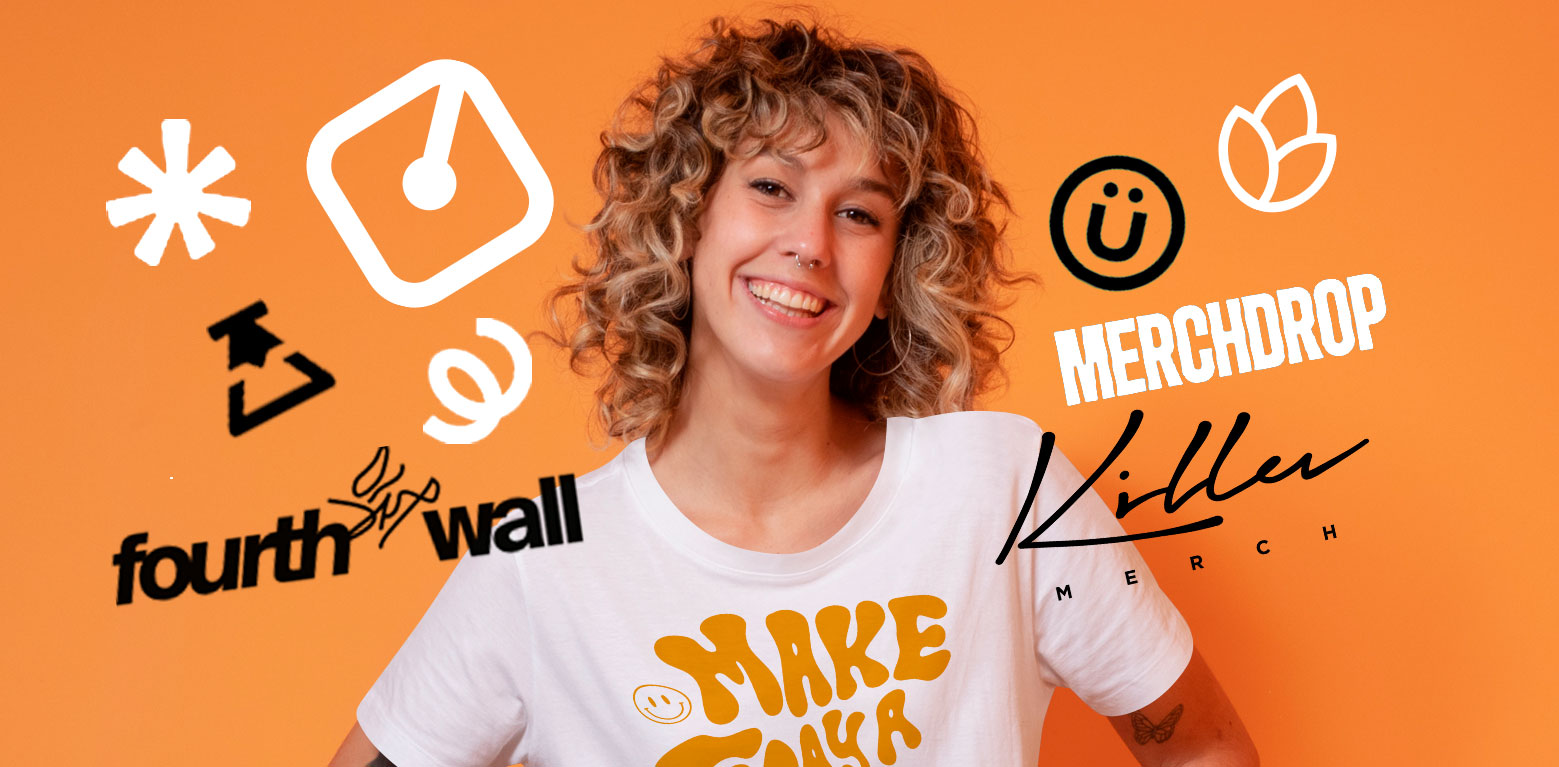
In the retail industry, there’s a general opinion that redesign can be too risky, too time-consuming and too expensive. Of course, it’s possible to go about redesign in an ineffective manner, but if you approach it strategically, it doesn’t have to be either of those things.
Redesigning a brand? Check out design templates and rebrand in a few simple steps!
What is actually an inevitable fact in this business is that change is necessary. In the fast-paced, competitive market of today’s retail companies, innovators and disruptors get rewarded for their ideas and creativity with increased sales and brand recognition.
As a 2020 retail company, it’s simply not enough to go with the flow anymore. After all, the goal is not to keep afloat but to thrive and grow as much as possible. To do this, smart and strategic redesign has to be introduced. According to McKinsey’s report, redesigns efforts can boost sales by up to 15% and customer satisfaction by 20% within a year or less.
In this overview, we’re bringing you some redesign ideas that will help you attract more customers, backed up by experts and industry reports.
Are you ready to let your retail company shine bright in its new attire?
- Follow Trends, But Not Blindly
When you’re going through redesigning efforts, you don’t have to do things intuitively or in the dark: there are known and tried-out trends that can help you find a successful path to better business and more sales.
Keeping up with the most recent developments in the industry can be done by attending conferences, reading industry news and blogs, joining online communities or reaching out to experts.
The retail industry is swiftly changing, so you will have to stay on top of your game and be ready to change quickly and frequently.
Some of the most influential trends for 2020 in retail are:
- visual search options
- omnichannel purchasing experiences
- social shopping
- customized designs
 Image source: Tinuiti
Image source: Tinuiti
However, as much as following trends can help you, it can also set you behind. Don’t introduce anything that’s hyped-up at the moment. Rather, apply those trends that would actually have a real impact on your store.
- Website Overhauls vs. Baby Step Redesigns
Just like any big changes, a complete overhaul of your online store can be either a huge success or a massive flop. Keep in mind that customers usually don’t like changes and it takes time to get used to them. Just remember the public reactions every time Facebook, Twitter or Instagram went through redesign…
To avoid this type of negative reactions, it’s smarter to introduce redesign changes to your website in small, baby steps instead of a huge overhaul. It also takes a lot of pressure off your design time, because there’s not a setting where everything has to be “ready and perfect” on launch day. Rather, design is tweaked on a daily basis and it’s so subtle that it often goes unnoticed by shoppers.
However, if you decide to go with a website redesign, make sure you do it purposefully and strategically, and not just for the sake of it.
“We see many websites and online stores drop in traffic after they go through redesign. What they failed to acknowledge is that their previous design was one of the driving factors for attracting their audience, however inefficient it could have been. This failure after redesign speaks to the company’s inability to correctly understand and predict the needs and preferences of their customers. So, make sure you always start with the customer/visitor in mind”, says Joeline Adams, a writer at BeGraded and Subjecto.
- UX/UI Redesign
Next to visual design, it’s also important that you optimize the user experience for customers in your online store. This relates primarily to the following issues:
- How easy is it to find one’s way around on the website for first-time visitors?
- Are the products easily found and reachable?
- Are the search and filtering features in product catalogs user-friendly?
- What are the unnecessary and unused sections of the website?
- What are the most frequently used ones?
- How simple is it to place an order?
- Is the online store mobile-friendly?

When you answer all these questions, you will start getting a clearer blueprint on what you still have to do when it comes to UX design.
Taking care of this side of design is crucial for attracting visitors and customers in 2020 when the competition is definitely not lacking and users are only a click away from leaving an unsatisfactory online store.
- Mobile Redesign
Building on UX/UI redesign efforts, mobile redesign and updates for retailers is another must-do for 2020.
There are more customers purchasing via mobile than ever before. On this year’s Black Friday and Cyber Monday sales, mobile commerce reached new records with sales totaling 6 billion dollars in the United States. Yes, you read that right – in only two days, only on mobile, US only.
When you take these mind-blowing statistics into consideration, it’s simply crazy and irresponsible to have a mobile-unfriendly website as a retailer.
Also, when we take a look at growth projections for the m-Commerce market, it looks like we will have to pay even more attention and resources to our mobile sites than we do our online stores for desktop computers.
If you want to stay ahead of the curve and not wait for the mobile shopping revolution to overwhelm your design team, invest as much as you can in a great m-shopping platform.
- Multimedia Trumps Text
Have you noticed that an increasing number of retail brands is now using videos and animations (gifs) on their social media posts, rather than plain images? There’s a good reason for that. According to research, customers respond to video better than any other type of content.
Videos are engaging, interesting, informative and can be consumed quickly – anywhere, anytime. (Maybe only with the sound off if you’re in an important meeting.)
To reap the benefits of this medium and other multimedia content, switch your product images with video, at least your primary, featured product presentation. You will instantly see a higher engagement rate among shoppers.
You can also introduce video to other sections of your online store, such as header images and instead of static images. They will give a much higher degree of dynamics to your online store.
Take a look at what retail titan ASOS is doing in its online store:

Not only does the product video serve the purpose to increase audience engagement, but it also shows potential buyers how the product looks like in reality, in 3D, by showing a video of a model walking while wearing the product.
This makes it much easier for customers to visualize the products on themselves than a generic image would ever allow them.
Conclusion
With new trends cropping up every day, there are so many exciting things you can do to redesign your retail store. According to experts, doing so can significantly increase your conversion rates and customer satisfaction.
However, when you do decide to go with a redesign, it’s important to go about it strategically and with clear goals in mind. Launching a redesigned site before you’re ready can have a counter-effect. That’s why the smarter approach is to introduce small, one-off changes rather than huge overhauls of your entire retail concept.
Change can be scary, but there can be no growth without it. This is applicable both to personal growth and business. If you want your retail company to thrive and grow year over year, you will simply have to introduce changes, like it or not.
Bio
Melanie Sovann is an award-winning writer and editor with years of experience in creating content and developing digital communication strategies. She is currently working as a contributor on essay writing sites TopEssayWriting and ClassyEssay. In her spare time, Melanie is an avid runner and traveller, who visited more than 50 countries. In her local community, she helps writers find their voice through workshops and seminars.





